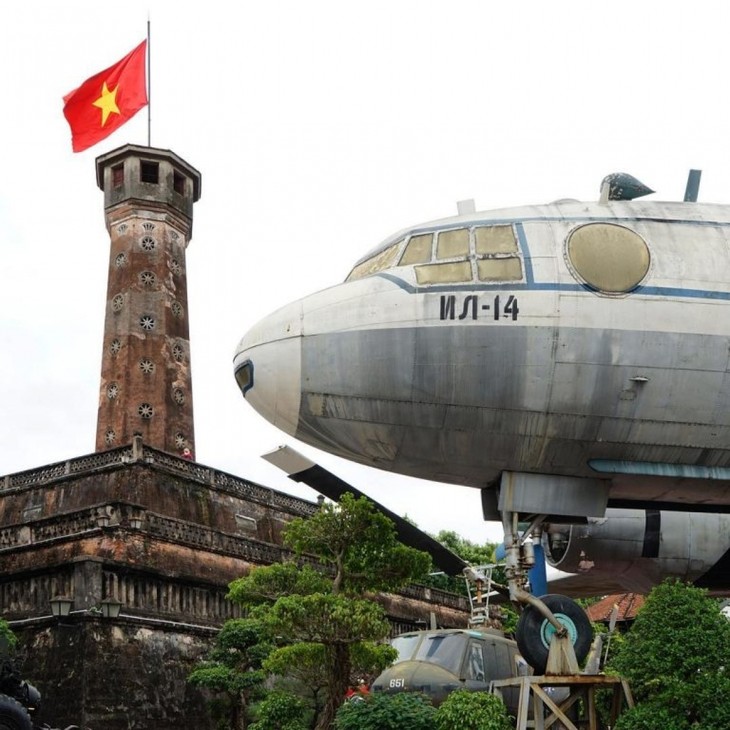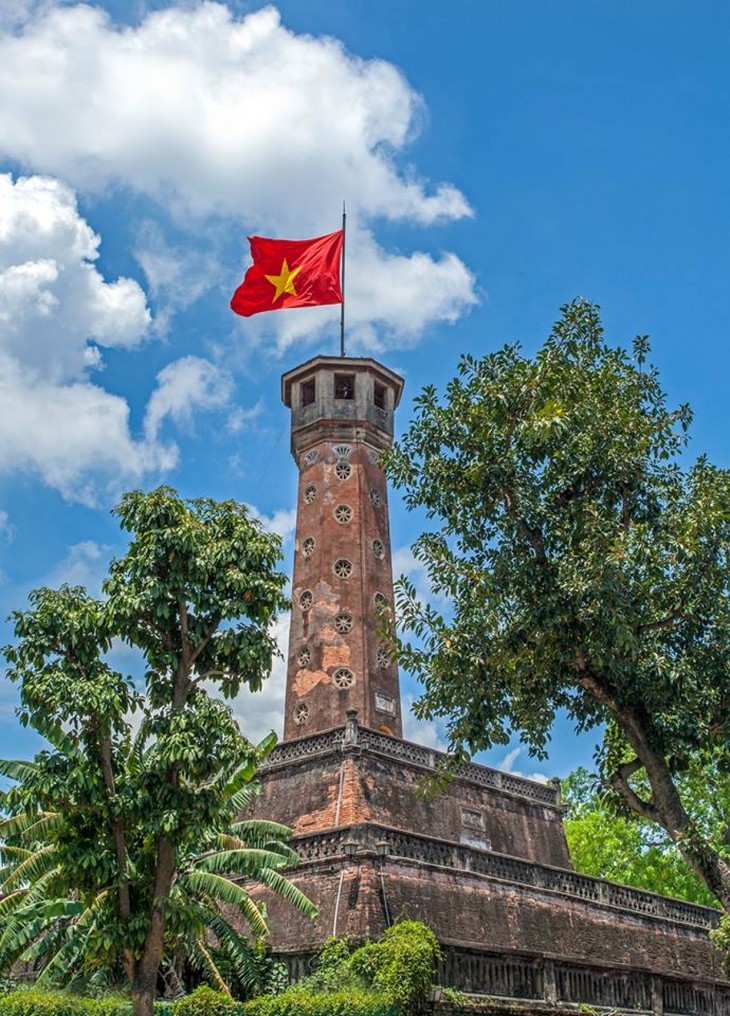The national flag hoisting ceremony at the Ha Noi Flag Tower on October 10, 1954, was a sacred milestone in Vietnamese history. The capital Ha Noi was liberated. The Ha Noi Flag Tower witnessed that triumphant moment and is a testament to the heroic imprint of the capital Thang Long-Ha Noi.

Ha Noi Flag Tower in the Vietnam Military History Museum on Dien Bien Phu street, Ba Dinh district (Photo: Thanh Huyen/VOV2)
The tower is located in the Vietnam Military History Museum on Dien Bien Phu street, Ba Dinh district. The national red flag with a yellow star has flown there proudly for the past 70 years as a symbol of the glory and pride of the Vietnamese people.
Captain Nguyen Lan Huong, Department of Communication and Education of the Vietnam Military History Museum, said: “Construction of the Ha Noi Flag Tower began in 1805 and completed in 1812 in the reign of King Gia Long of the Nguyen dynasty. Here, two major battles between the soldiers of the Nguyen dynasty and the French army broke out in 1873 and 1882, when French troops occupied this place as a military base. They used the flag tower as an observation post throughout the resistance war of the Vietnamese army and people until 1954, when Ha Noi was liberated and the Vietnamese took over the tower.”
The tower stands at the southern end of the Thang Long Imperial Citadel. The foundation and flagpole have a combined height of 44 meters. The foundation consists of square pyramids overlapping each other.
Each side of the first floor is 42.5m long and 3.1m high. The smaller second floor has 27-meter sides and is 3.7m high. This floor has 4 doors, 3 of which have words over them. The East door says “Welcoming the morning light”. The West door says “Reflecting light”. The South door says “Toward the light”. And the North door has no inscription. The third floor has sides 12.8m long and is 5.1m high, with a staircase on the north side.
On top of the third floor is an 8-sided flagpole 18.2m high and tapering toward the top. Inside the flagpole is a 54-step spiral staircase. The tower is lighted and ventilated by 39 fan-shaped holes.

The 200-year Flag Tower is a testament to the heroic and glorious events that have transpired in Thang Long-Ha Noi. (Photo: Thanh Huyen/VOV2)
During the Nguyen Dynasty, the yellow flag of the royal court was often hung here for national holidays and New Year celebrations. From the flag tower the King and his mandarins reviewed the military and martial arts.
From the top of the flag tower you can see a large part of Ha Noi and traces of the Thang Long Imperial Citadel. To the North there are many ancient relics, such as the Doan Mon Gate, the Princess Tower, and the North Gate. To the East is the Ha Noi Post Office and Hoan Kiem Lake. To the West you can see Ba Dinh Square, the Ho Chi Minh Mausoleum, and the Ho Chi Minh Museum. And to the South there is an open space with many examples of ancient architecture.
Lieutenant Colonel Le Vu Huy, Director of the Vietnam Military History Museum, says the Ha Noi Flag Tower is one of the few intact structures in the Thang Long Imperial Citadel relic complex. The flag tower was officially recognized as a historic relic in 1989. It’s considered a sacred symbol of the capital. In 1945, after the success of the August Revolution, the red flag with a yellow star was first hoisted on the Hanoi Flag Tower.
“Through the ups and downs of history, particularly during the 30 years of wars for national liberation, the flag tower was intact. The national flag flying atop the flagpole arouses the pride of the Vietnamese people,” Huy said.
The 4m by 6m national flag atop the Ha Noi Flag Tower is regularly replaced with a new one.
The 200-year Flag Tower is a testament to the heroic and glorious events that have transpired in Thang Long-Ha Noi. On October 10, 1954, thousands of people gathered around the tower to await the historic ceremony to hoist the national flag to mark Ha Noi’s liberation. The beautiful memories of that historic day are still vivid in the minds of many people.
"When the liberation army took over the capital, they were joyfully greeted by the locals. On that day, the national flag was hung on the flagpole to flutter in the wind. It symbolized the pride of national independence.”
“We were very happy. We hugged each other and cried. On both sides of the street people welcomed us with a sea of flowers and flags. It’s an indescribable feeling.”
Through time, harsh weather, and the destruction of war, the Ha Noi Flag Tower carrying the national flag has stood tall, symbolizing the will, independence, and self-determination of the Vietnamese people.
















